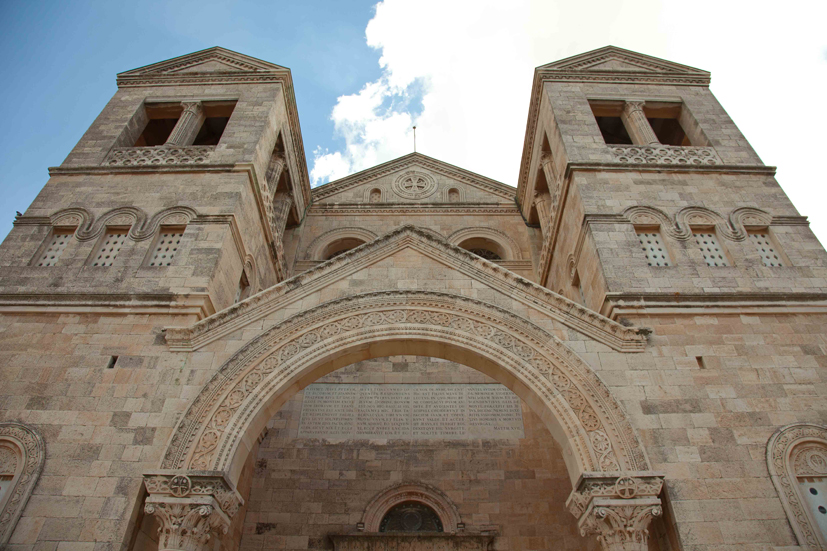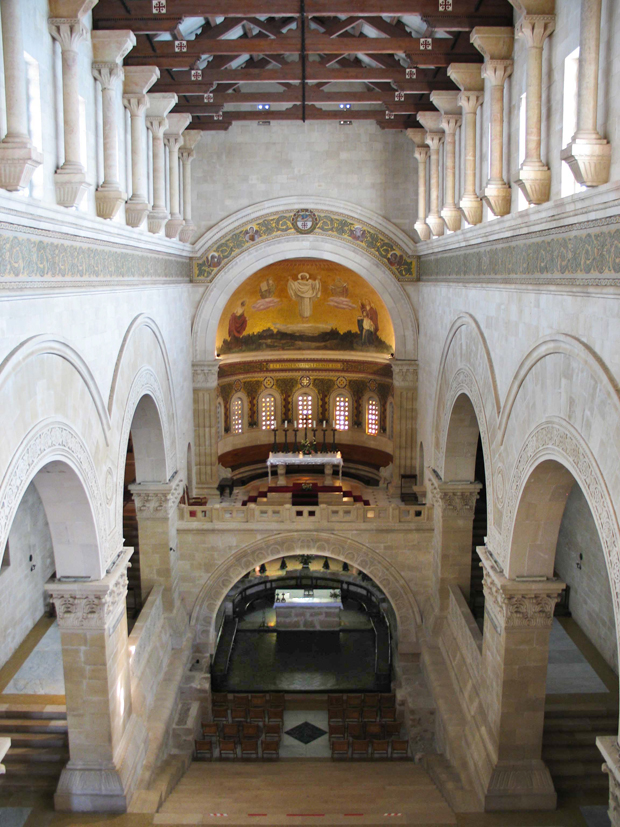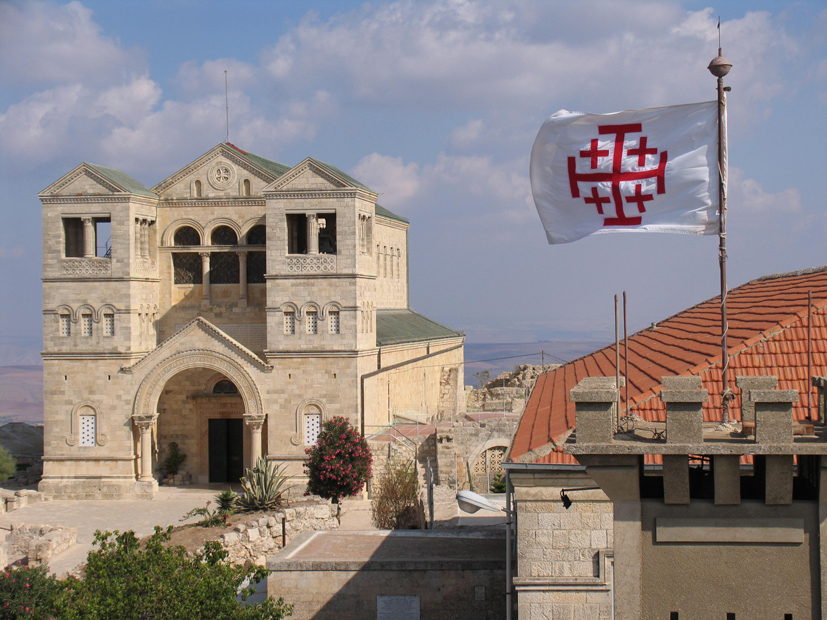A preview from the historical section of the Terra Sancta Museum: the Byzantine vestment of the Transfiguration
On the occasion of the solemnity of the Transfiguration on Mount Tabor, as we did with the liturgical vestments of the Immaculate Conception, we present a 20th century paramentic set which will be included in the first volume of the Terra Sancta Museum catalogue.
The volume will be edited by Maria Pia Pettinau Vescina, a scholar of antique fabrics, and will feature contributions by Danièle Dénise-Veron, an expert on liturgical and secular vestments embroidery, some of which was exhibited at the Château de Versailles during the 2013 exhibition “Trésor du Saint Sépulcre.” There will also be another contribution by Father Stéphane Milovitch, director of the Cultural Heritage Office, on the tradition and continuity of the use of sacred vestments in the Holy Land. The photographic campaign was conducted by Alfonso Bussolin, Giuliano Mami and Nadim Asfour (CTS).

The set we present today is the so-called “Byzantine” set of the Transfiguration. It consists of a chasuble, four dalmatics, two copes, two stoles, a maniple and a humeral veil. It was commissioned by Commissioner Pirmin Hasenöhrl for the Basilica of the Transfiguration of Mount Tabor in 1935 and is currently under restoration.
“The dominant fabric of the set, rendered brilliant by a dense field of golden metal wefts, is characterized by a calligraphic design of Byzantine inspiration in burgundy red silk.
The texture of the fabrics and the embroidery are so closely linked to the place for which they were designed, the Basilica of the Transfiguration on Mount Tabor, that it can be assumed that the set was created in accordance with the neo-Byzantine mosaic decorations made a decade earlier by Rodolfo Villani (1881-1941) in the apse. The work was commissioned by Antonio Barluzzi (1884-1960), the architect of the basilica.
[…] The scene of the Transfiguration, represented by embroideries on the shield of the first cope, recalls the manifestation of the divinity of Christ as told by the three synoptic Gospels. The figure of Jesus, in a mandorla of light, a symbol of divinity, is placed between Moses and Elijah, witnesses of the Old Covenant. Moses carries the Tablets of the Law next to the burning bush through which God (indicated by his Hebrew inscription) spoke to him (Ex 3:14). Elijah, a prophet of solid faith, carries the bread and pitcher of water given to him by an angel of God (1 Kings 19:5-7). The apostles Peter, John and James contemplate the vision.
In this liturgical ensemble, narrative iconography alternates with symbolic abstraction and symbolic-figurative images. The shield of the second cope contains, in a disc of shiny cloth, the crossing of the letters X and P (chi and rho), a Byzantine monogram of the name of Christ, accompanied by the letters A and Ω (alpha and omega), the first and last letter of the Greek alphabet with which the Lord defines himself in Revelation (Rev 1:8; 21:6).
Among the motifs of the shield, as well as those of the orphrey of the cope, are geometric shapes in the Art Deco style from Viennese workshops (Wiener Werkstätte) directed by Joseph Hoffman (1870-1956) which had their own matrix.
On the back of the chasuble, the pulvinar of a column forms the base of concentric heavens in which the risen Christ dominates, housed in the theophysical sign of the mandorla. The capital is decorated with peacocks, as seen in the stained-glass windows of the crypt. On the front, the Risen One is symbolized by the Lamb, who is “passing through” and “in glory,” while Christ appears immolated in the mosaic portraying his Passion and Death.
The stylistic unity of the embroideries and mosaics is evident in the verticality of the angels (a neo-Byzantine characteristic) who celebrate the birth of Christ and the Eucharist respectively in the two dalmatics.
[…]These magnificent vestments are still used today in the basilica for the celebrations of August 6, the Feast of the Transfiguration. Among the architecture designed by Antonio Barluzzi, the viewer’s gaze passes from the mosaic scenes of the crypt, immersed in the softest light, to the dazzling motifs of the apse and the embroidered images of the ornaments. The fabric thus helps emphasize the light that is an essential part of the event.
The paramentic set was created in 1935 in Vienna by the Congregation of the Sisters of the Poor Child Jesus who, three years earlier, had organized a parade for Saint Catherine’s Monastery in Alexandria, Egypt.
[…] To the Sisters of the Poor Child Jesus, we owe the sacred clothes preserved in the chapel of the Austrian Hospice in Jerusalem (Österreichische Hospiz zur Heiligen Familie): the chasuble donated by Emperor Francis Joseph of Habsburg-Lorraine which has reproduced on its back the image of the Trinity, and the chasuble with the image of the Good Shepherd given by his brother Archduke Karl Ludwig (1833-1896) and his brother’s wife Maria-Theresa of Portugal (1855-1944).” [1]
____________________________
[1] Pettinau Vescina, Maria Pia, Paramenti sacri. Dall’Europa alla Terra Santa, ETS, Milan, 2019, p. 451-455.







